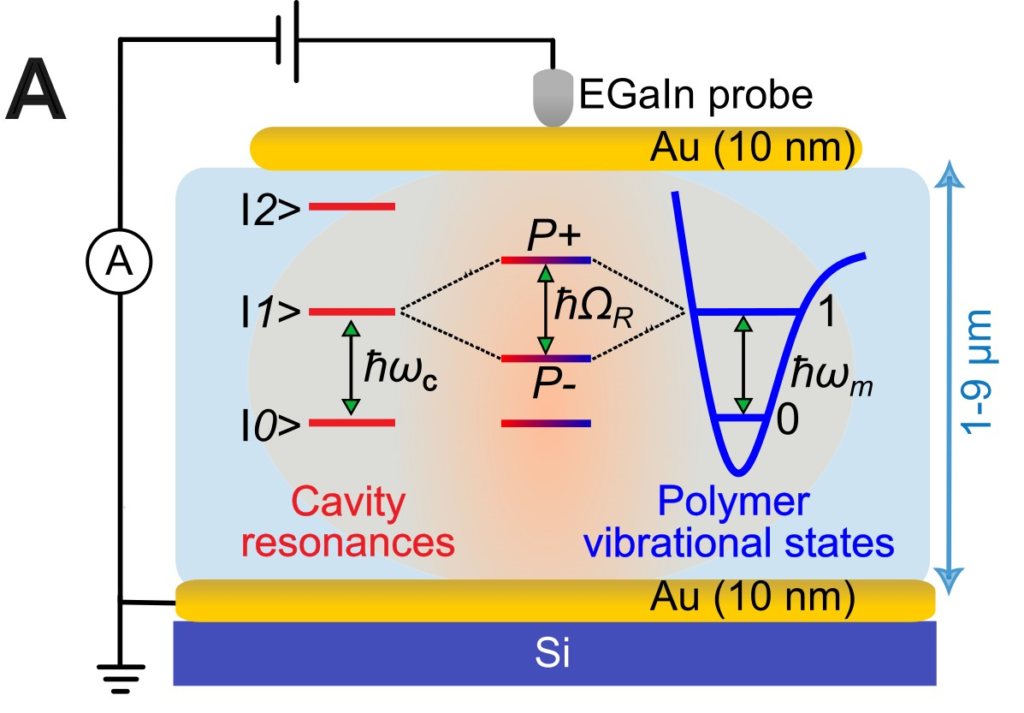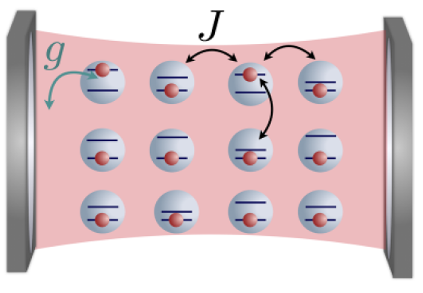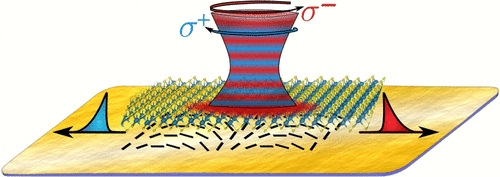Light-Matter Interactions: Research directions at CESQ
Light-matter coupling is fundamental to our understanding of the laws of quantum mechanics, and enabling new technologies used in everyday life.
Open questions:
- Can strong light-matter coupling be harnessed to modify material properties and realise new quantum technologies?
Research topics:

- Polaritonic chemistry
While polaritonic states are expected to be the main spectral feature of strong light-matter coupling, the role of the extensive number of dark states that couple to cavity photons in the presence of disorder was recently pointed out as a key mechanism for the cavity-induced modifications of transport and chemical reactivity. CESQ reserchers explore how both static and dynamical disorder could explain the observed modifications of material properties in cavity-QED setups.
- Cavity-enhanced transport
Electronic transport in materials can be controlled by coupling a dipolar transition to the vacuum field of a cavity or a plasmonic resonator. CESQ researchers explore different strategies to turn this emerging field of research into operational technology. One is electronic strong coupling in the visible frequency range, the other is through vibrational strong coupling in materials where electronic transport can be mediated by electron-phonon interactions at mid-to-far infrared frequencies.
- Strongly-coupled systems
At CESQ, researchers explore ways to strongly couple atoms and light using cavites, plasmonic modes or ensembles of atoms. Chiral strong coupling can be used to map electronic excitations to directional optical modes. Arrays of strongly-coupled atom-cavity systems can be used to realize a quantum phase transition for photons.
Groups involved: LIMACS Lab, QMT Lab.


